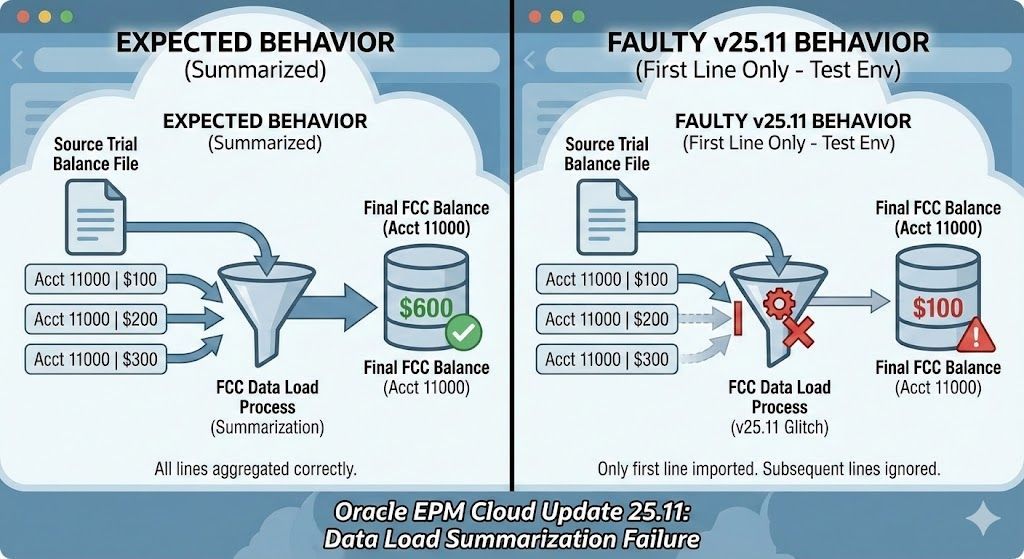Bridging the Divide: Understanding Dimension Alignments in Oracle EDM
Nadia Lodroman • 13 May 2025
Listen to Tresora and Ledgeron's chatting about this blog post:
Aligning Dimensions Across Applications in Oracle EDM
In the ever-evolving landscape of enterprise performance management, data governance and consistency are paramount. Oracle Enterprise Data Management (EDM) stands as a powerful solution for harmonising your critical data assets. At the heart of this harmonisation lies the concept of dimension alignments. But what exactly are they, and why should you care?
Think of your dimensions – like Chart of Accounts, Legal Entity, Product, or Customer – as the fundamental building blocks of your reporting and analysis. Each application across your enterprise, be it Oracle EPM Cloud, ERP Cloud, or even on-premises systems, likely has its own representation of these dimensions. This is where the potential for chaos creeps in. Inconsistent naming conventions, varying hierarchies, and differing properties can lead to a fragmented view of your business, making meaningful analysis a herculean task.
Enter Dimension Alignments: The Great Unifier
Dimension alignments in Oracle EDM provide a robust framework to bridge these divides. They allow you to establish clear and consistent relationships between the dimensions and their members across your connected applications. Essentially, you're creating a central "source of truth" for your dimensional data and mapping how it translates to each target system.
Why is Dimension Alignment Crucial?
- Data Consistency: By defining explicit alignments, you ensure that a "Sales Revenue" member in your planning application corresponds accurately to the "Sales Income" member in your general ledger. This eliminates ambiguity and fosters trust in your data.
- Streamlined Integration: Alignments simplify the integration process. Instead of manually mapping data between each system, EDM handles the transformations based on your predefined rules. This saves time, reduces errors, and accelerates deployment.
- Enhanced Reporting and Analysis: With consistent dimensions, you can generate unified reports and perform cross-system analysis with confidence. Imagine comparing sales performance across different product lines reported in various systems – alignment makes this a reality.
- Improved Data Governance: EDM's alignment capabilities empower you to enforce data standards and maintain a clear audit trail of changes. This strengthens your overall data governance framework.
- Future-Proofing Your Data Landscape: As your business evolves and you integrate new applications, well-defined dimension alignments provide a solid foundation for seamless data integration in the future.
How Does EDM Facilitate Dimension Alignment?
Oracle EDM offers a user-friendly interface and powerful features to manage dimension alignments effectively:
- Centralised Definition: You define and manage all your dimension alignments within the EDM platform, providing a single point of control.
- Mapping Capabilities: EDM allows you to create various types of mappings, including one-to-one, many-to-one, and even complex transformations using expressions and lookups.
- Hierarchy Alignment: Beyond just member mapping, EDM enables you to align hierarchies, ensuring consistent roll-ups and drill-down capabilities across systems.
- Property Alignment: You can also align member properties, ensuring that critical attributes like descriptions, aliases, and user-defined attributes are consistent across applications.
- Validation and Audit: EDM provides built-in validation rules to ensure the integrity of your alignments and maintains an audit history of all changes.
Getting Started with Dimension Alignments
Implementing dimension alignments effectively requires careful planning and consideration:
- Identify Key Dimensions: Determine the core dimensions that are critical for your reporting and analysis.
- Analyze Source and Target Systems: Understand how these dimensions are represented in each of your connected applications.
- Define Alignment Requirements: Determine the necessary mappings and transformations to achieve consistency.
- Leverage EDM's Capabilities: Utilize EDM's intuitive interface and powerful features to create and manage your alignments.
- Test and Validate: Thoroughly test your alignments to ensure data accuracy and consistency.
- Maintain and Govern: Establish processes for ongoing maintenance and governance of your dimension alignments.
In Conclusion
Dimension alignments in Oracle EDM are not just a technical configuration; they are a strategic imperative for organisations striving for data-driven insights and operational efficiency. By effectively bridging the divide between disparate systems, EDM empowers you to unlock the true potential of your data and build a more unified and reliable enterprise performance management landscape. So, take the time to understand and implement robust dimension alignments – your future self (and your reporting teams) will thank you!
Note:
Nadia Lodroman is a certified EDM implementer with practical experience successfully implementing Oracle EDM, including the crucial aspect of dimension alignments, for a large regional bank in the United States. Her expertise underscores the real-world significance and benefits of effectively managing dimension alignments.






